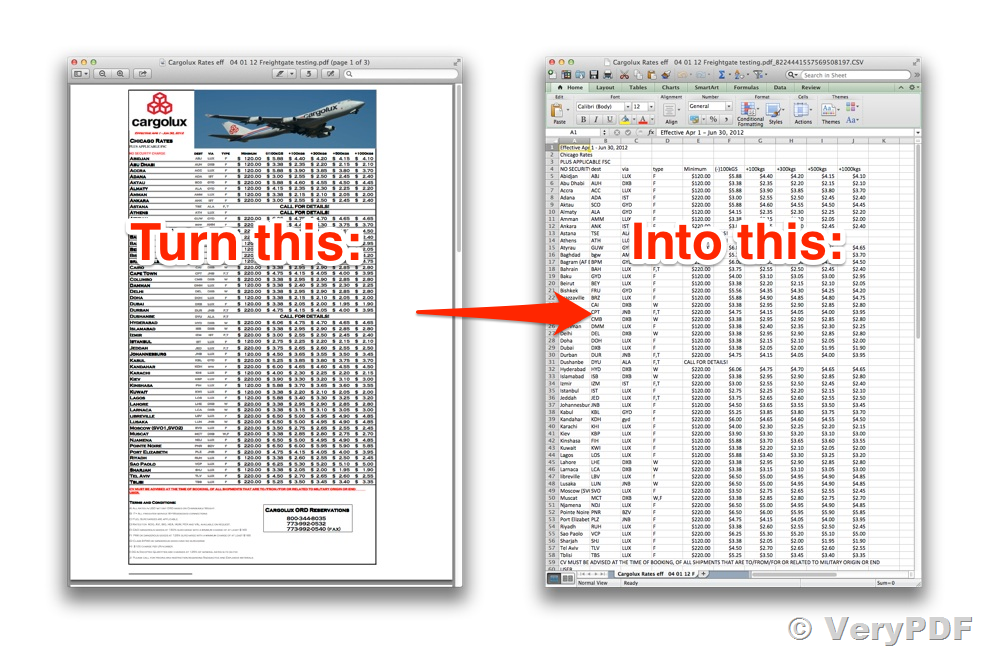Convert PDF to Excel: Easy Methods Revealed

Converting a PDF document into an Excel spreadsheet can significantly enhance your ability to analyze, manipulate, and utilize the data within the PDF. Whether you're working with financial reports, inventory lists, or any tabular data, the task can streamline your work process. In this comprehensive guide, we'll explore various methods to convert PDF to Excel, ranging from automated online tools to manual data entry techniques.
Why Convert PDF to Excel?

Before diving into the methods, it’s worth understanding why one would choose to convert PDFs to Excel:
- Data Analysis: Excel is ideal for complex data manipulation, including functions, pivot tables, and chart creation.
- Data Integration: Integrating data from different sources is easier when everything is in a uniform format like Excel.
- Editing: PDFs are primarily designed for presentation, not editing. Excel allows for easy modification and updating of data.
Manual Conversion

This method involves manually copying and pasting the data from your PDF file into an Excel spreadsheet. Here’s how you can do it:
- Open your PDF document with a PDF reader.
- Highlight the data you wish to transfer, right-click, and select “Copy.”
- Open Excel, select the cell where you want to start pasting the data, right-click, and choose “Paste.”
- Ensure the data is aligned correctly. If not, you might need to manually adjust the cells or format the data.
Notes:

💡 Note: Manual conversion is time-consuming but useful when dealing with small data sets or when precision is critical.
Automated Online Tools

There are numerous online tools that can automate the PDF to Excel conversion process. Here are some steps for using one of these services:
- Choose a reputable online conversion tool like Adobe Acrobat Online or PDFtoExcel.
- Upload your PDF file to the website.
- Select any conversion options if provided (like setting the page range, choosing the format for numbers or dates).
- Click the convert button and download the Excel file when it’s ready.
Notes:

⚠️ Note: Be cautious when uploading sensitive data online. Use tools with privacy policies that you trust.
Using Software for Conversion

Desktop software can provide more control over the conversion process. Here are steps for using Adobe Acrobat Pro DC:
- Open your PDF in Adobe Acrobat Pro DC.
- Navigate to “Tools” > “Export PDF.”
- Select “Spreadsheet” as the export format and choose Microsoft Excel Workbook.
- Adjust settings like page range, and confirm the output format.
- Export and save the new Excel file to your desired location.
Notes:

👌 Note: Adobe Acrobat Pro DC is not free, but it provides high accuracy and advanced options for data extraction.
Programmatic Approach with Python

For users with some coding knowledge, Python can automate the conversion:
- Install necessary libraries:
pip install pdfplumber - Write a script:
“`python
import pdfplumber
import openpyxl
def pdf_to_excel(pdf_path, excel_path): with pdfplumber.open(pdf_path) as pdf: wb = openpyxl.Workbook() sheet = wb.active
for page_num, page in enumerate(pdf.pages): data = page.extract_table() if data: for row_num, row in enumerate(data): for col_num, cell in enumerate(row): sheet.cell(row=row_num + 1, column=col_num + 1, value=cell) if page_num != len(pdf.pages) - 1: sheet.append(['Page Break']) # To separate different pages wb.save(excel_path)pdf_file = ‘your_pdf_file.pdf’ excel_file = ‘converted.xlsx’ pdf_to_excel(pdf_file, excel_file) “`
- Run the script and the output will be saved as “converted.xlsx”.
Notes:

🚀 Note: This method requires programming skills but can be highly customized to handle various PDF formats and structures.
Summing Up

Converting PDF documents to Excel spreadsheets is beneficial for data analysis and integration. Each method has its pros and cons:
- Manual conversion offers precision but is time-intensive.
- Automated tools are convenient but might compromise on privacy or accuracy.
- Software provides the best balance of control and accuracy.
- Programmatic approaches are for those with coding skills, offering the most tailored solution.
The choice depends on your needs for accuracy, speed, and technical capability. With this guide, you're now equipped to choose the best approach for your PDF to Excel conversion needs.
What are the limitations of online PDF to Excel conversion tools?

+
Limitations include issues with complex layouts, inconsistent formatting, privacy concerns, and limited control over the output. Some tools might also charge for converting larger files or have daily limits on free conversions.
How can I ensure the accuracy of data during conversion?

+
To ensure accuracy, use high-quality conversion tools, manually review the results, and consider using OCR technology for scanned documents. It’s also helpful to have a structured PDF initially.
Can I convert multiple PDF files to Excel at once?

+
Yes, some software solutions and online tools support batch conversion, allowing you to process multiple files in one go. This feature saves significant time when handling multiple documents.



